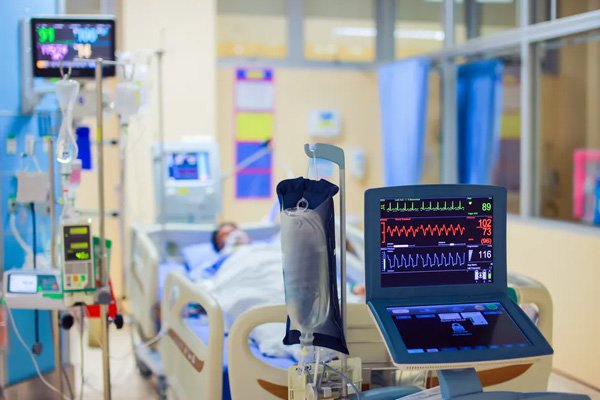
The Intensive Care Unit (ICU) is a separate, self-contained area within a medical facility, equipped with high-tech specialised facilities designed for close monitoring, rapid intervention and often extended treatment of patients with acute organ dysfunction. It is committed to the management and continuous monitoring of patients with life-threatening conditions. The aim of intensive care is to maintain vital functions in order to prevent further physiological deterioration, reduce mortality and prevent morbidity in critically ill patients. Provision of intensive care is within the continuum of primary, secondary and tertiary care, with the majority of these services delivered in the secondary-care setting.
An HDU is a specially staffed and equipped area of a hospital that provides a level of care intermediate between intensive care and the general ward care. Although HDUs may be located in or near specialty wards, increasingly they are located within or immediately adjacent to an ICU complex and are often staffed by the ICU.
The HDU provides invasive monitoring and support for patients with or at risk of developing acute (or acute-on-chronic) single-organ failure, particularly where the predicted risk of clinical deterioration is high or unknown. It may act as a ‘step-up’ or ‘step-down’ unit between the level of care delivered on a general ward and that in an ICU. Equipment should be available to manage short-term emergencies (e.g. need for mechanical ventilation). Earlier studies have shown conflicting results about benefits to outcome associated with the introduction of HDUs,8 whereas a more recent survey where HDU care was based on a ‘single-organ failure and support model’ has shown that HDUs play a crucial role in management.
All patients are admitted to the Post-Anesthesia Care Unit (PACU) following surgery and anesthesia at HSS. The length of your stay in the PACU depends on several factors, including demonstrated recovery from anesthesia. If you have had epidural or spinal anesthesia, you must be able to feel and move your legs before being discharged from the PACU.
Pain medicine will be initiated in the PACU. Your pain control regimen may take the form of pills, injections, or patient-controlled analgesia (PCA), sometimes called a "pain pump". Sometimes after surgery, you may require medications to control variations in your vital signs, such as blood pressure, heart rate, or respiratory rate. You will not be discharged from the PACU until your vital signs are stable.
Patients who have lost blood during their surgery may receive blood products in the PACU. In many cases, this blood is donated by the patient prior to surgery.
If you undergo a long and/or complex operation, or have pre-existing medical problems, staff from the PACU may decide to monitor your recovery for a period of time following your operation. The decision to remain in the PACU is made by your anesthesiologist, surgeon, and medical doctor.
Visitation is limited in the PACU to avoid the risk of infection to other patients and to permit the staff to concentrate on the care of these post-surgical patients.
Pain is complex, so there are many treatment options -- medications, therapies, and mind-body techniques. Learn the benefits and risks of each, including addiction.
We have all experienced pain. But despite it being one of the most common symptoms people seek medical help for, it is also one of the most misunderstood and ineffectively treated.
Part of the reason is that one person’s experience of the same painful event can be significantly different from another’s. In this article, we identify the most common types of pain and offer some suggestions on the best type of treatment. Because there is no one-size-fits-all approach.
Pain is a general term that describes any kind of unpleasant or uncomfortable sensation in the body.
There are many different types and causes of pain, and these can be grouped into eight different categories to help with pain management:
Pain is a general term that describes any kind of unpleasant or uncomfortable sensation in the body.
There are many different types and causes of pain, and these can be grouped into eight different categories to help with pain management: